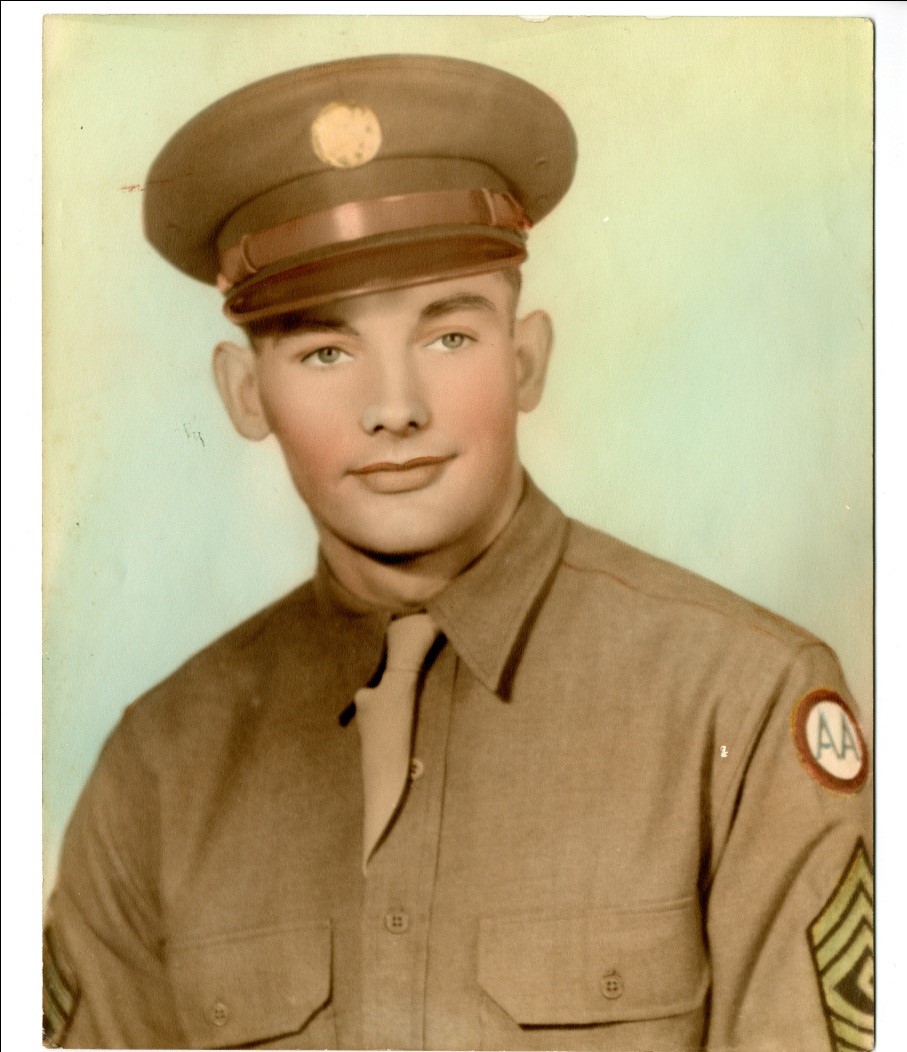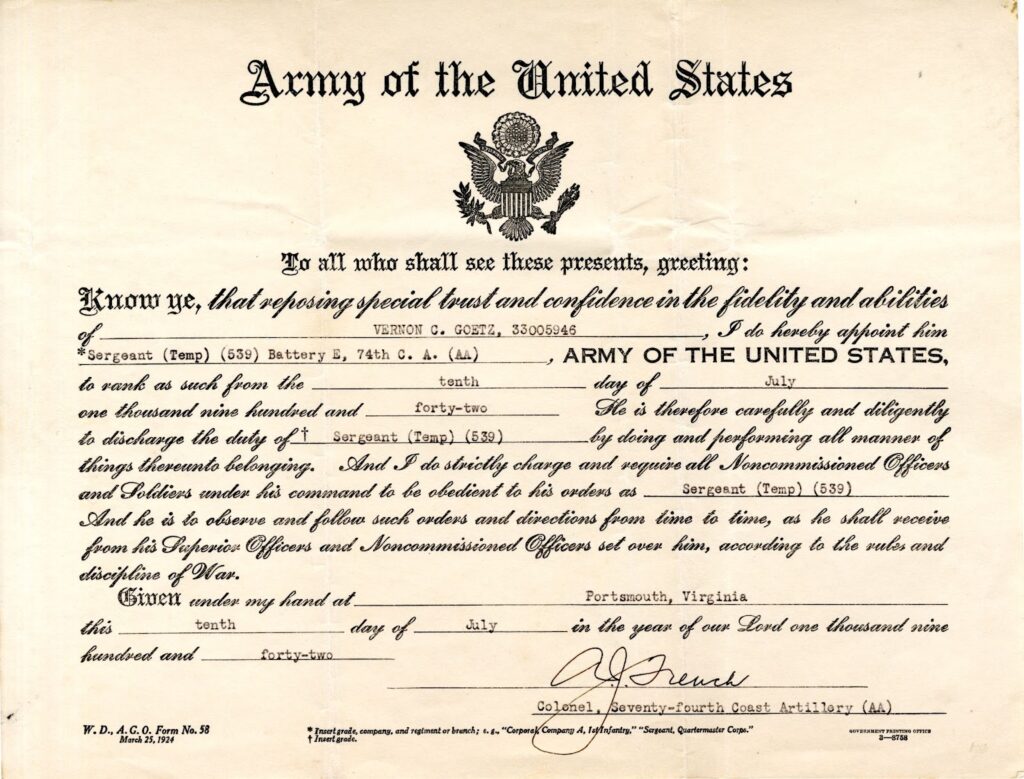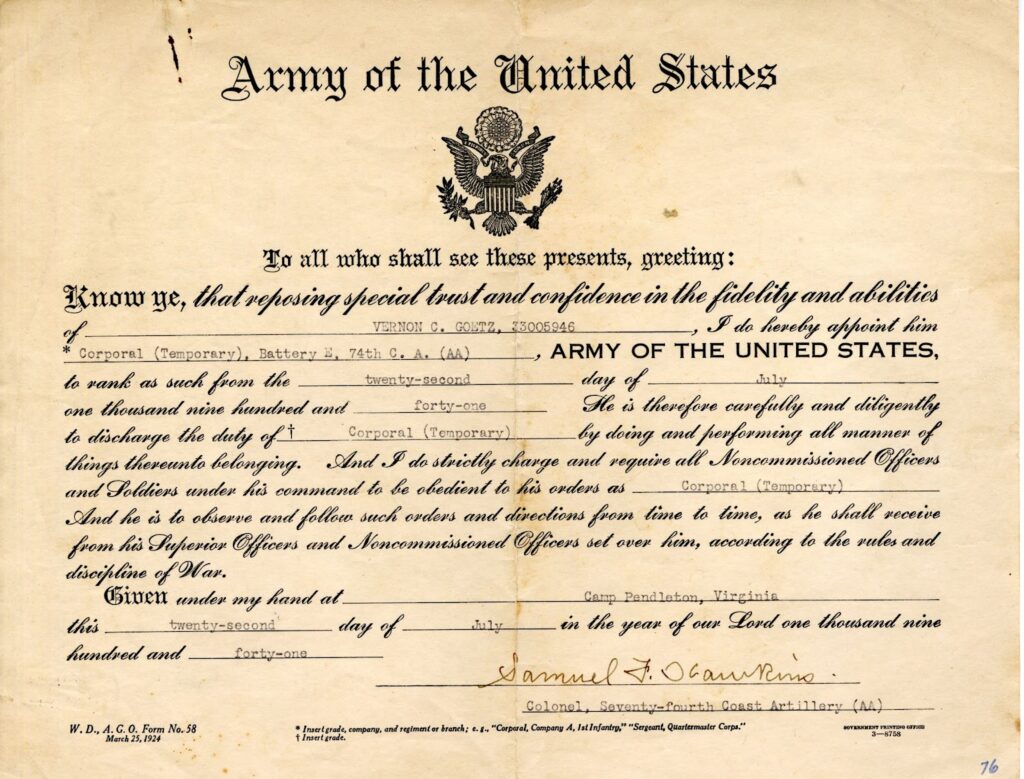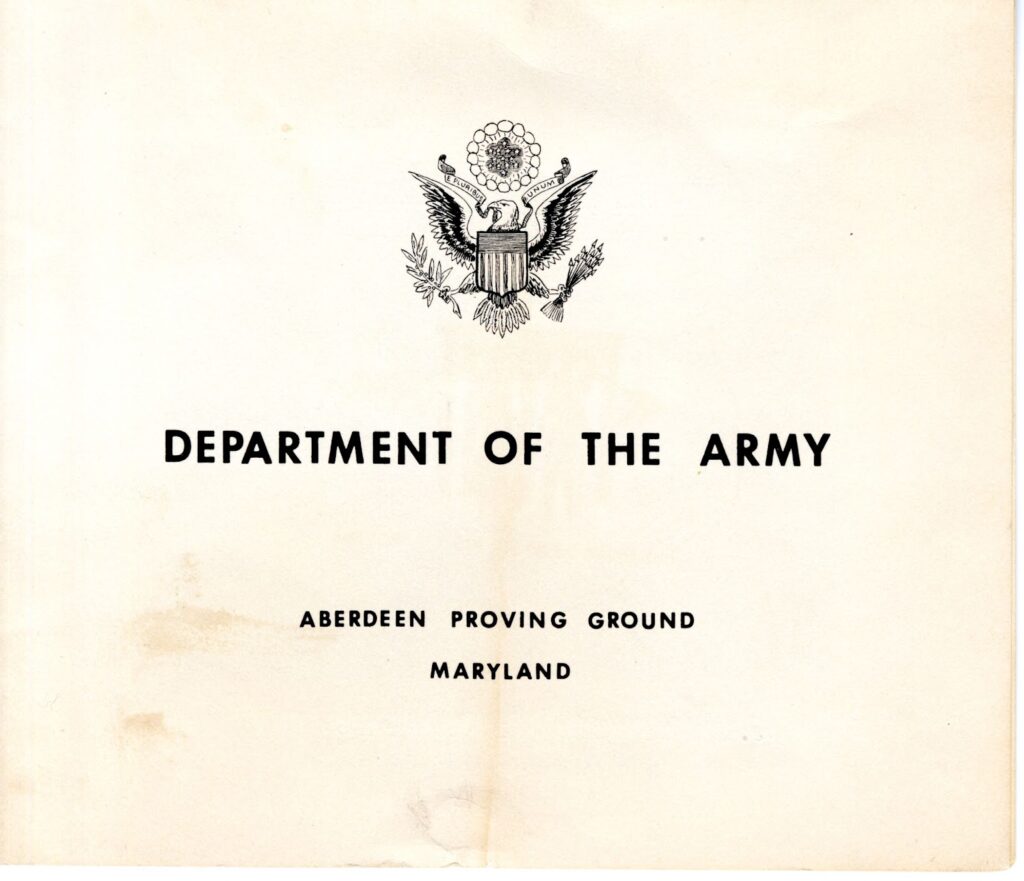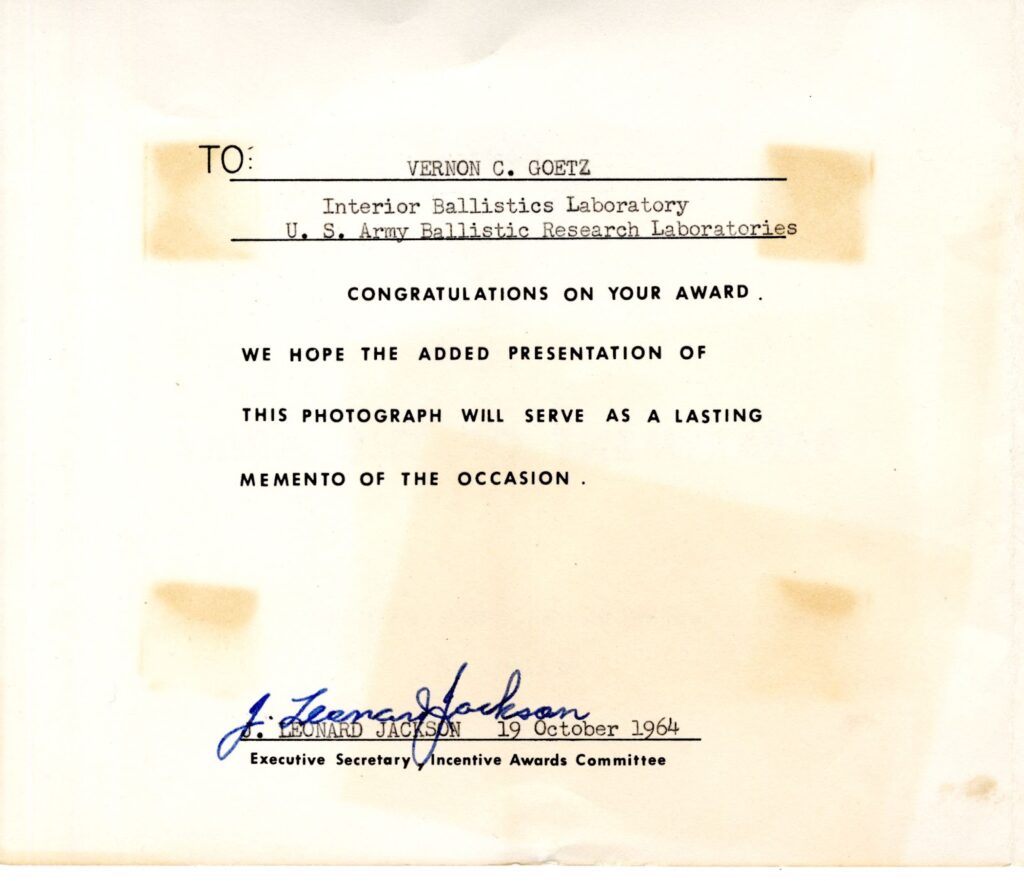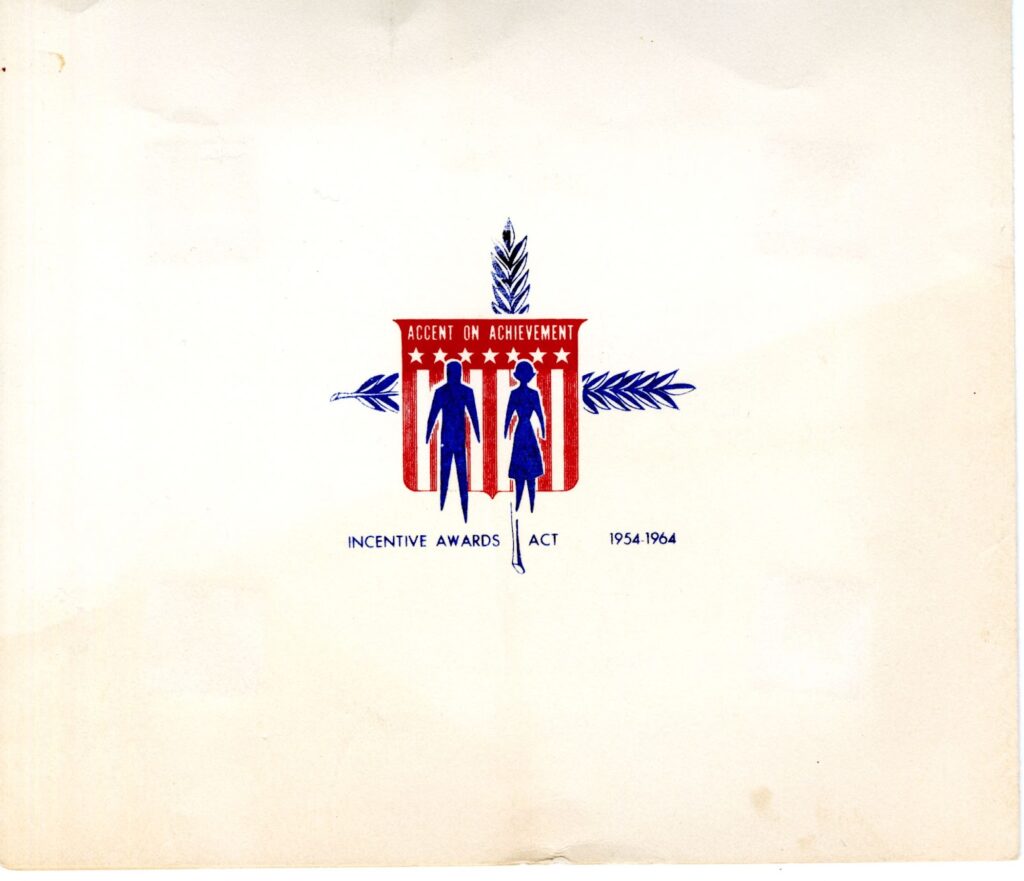Introduction
This page contains three certificates awarded to Goetz during World War II, as well as an award for his work at Aberdeen Proving Ground in 1964.
Also included on this page are two poems Goetz wrote. One was likely written while Goetz was training at Fort Monroe, and the other was probably written towards the end of World War II and describes the 87th division’s successes.
Finally, information on the ration cards collected by Goetz during the war can be found below.
Certificates and Photos
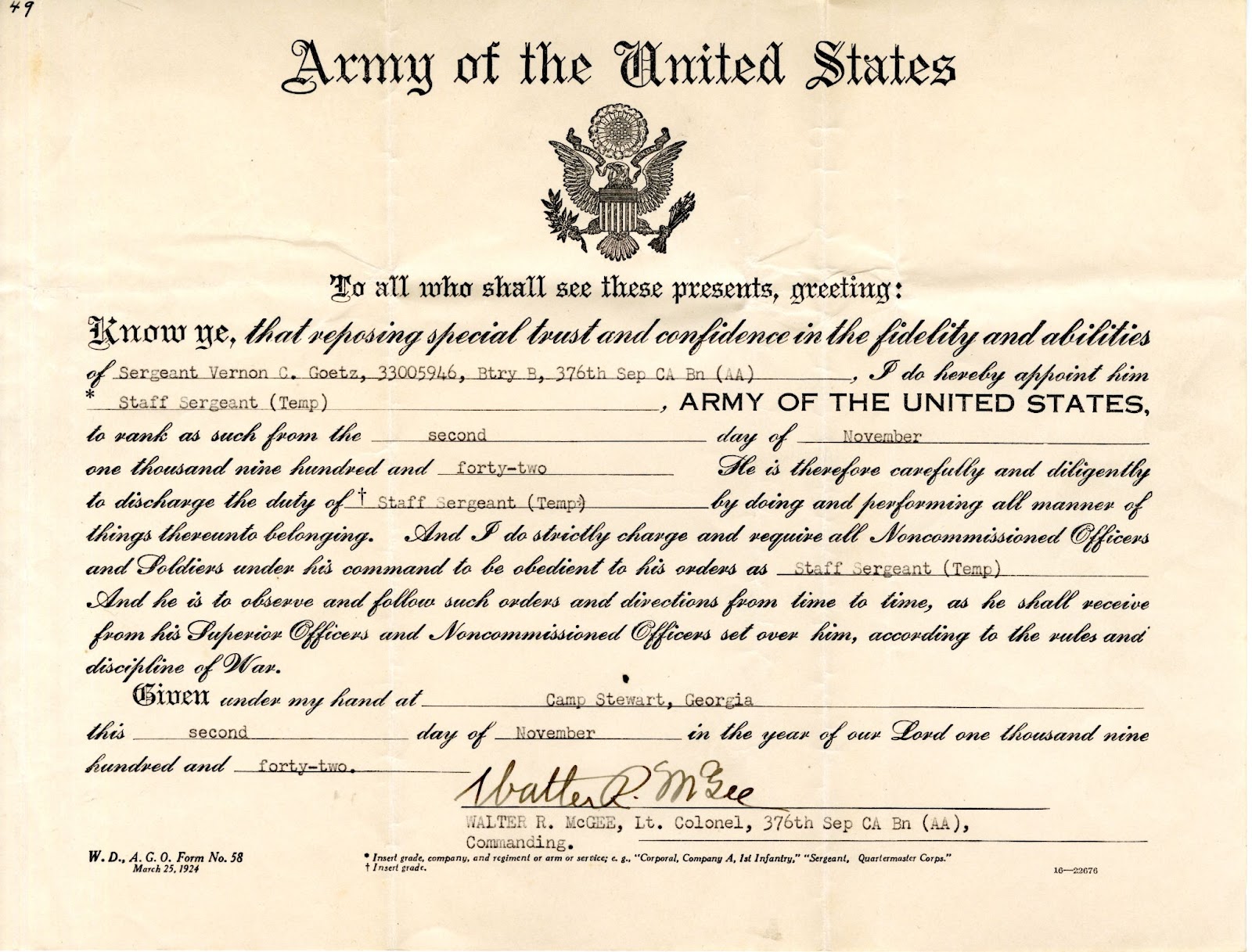
A folder containing a photo of Goetz receiving his award for work in the Interior Ballistics Laboratory at Aberdeen Proving Ground. It congratulates him on his award and is signed by J. Leonard Jackson and dated 19 October 1964. The back of the folder has the logo of the Incentive Awards Act 1954-1964.
Poems
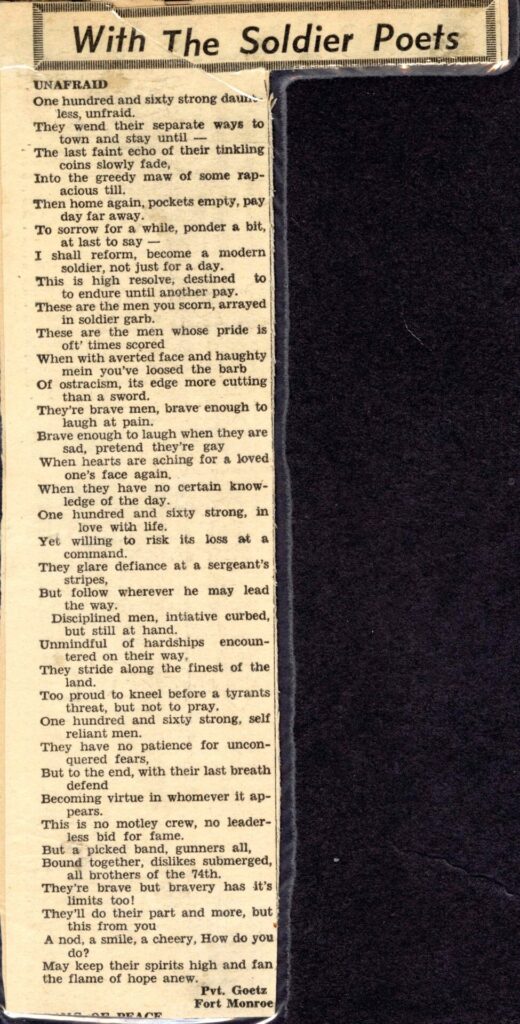
This poem was published in a newspaper or magazine. Goetz probably wrote this poem while he was training at Fort Monroe and in the 74th division. Goetz begins the poem by describing how soldiers often feel held in contempt by civilian society. He then goes on to write about the soldier’s bravery, resilience, and camaraderie. The poem ends with Goetz encouraging the readers to be friendly towards soldiers to help keep up morale.
Written towards the end of World War II, this poem composed by Vernon Goetz provides a triumphant account of the Golden Acorn’s (87th division) role in the war. He states how the division first entered the war during the Battle of Metz. Goetz then continues to take the reader through the 87th’s various battles, from recounting their experience in the Battle of the Bulge to the 87th’s fight on the Siegfried Line. The poem ends with Goetz reflecting on the division’s journey, hoping for the war to end.
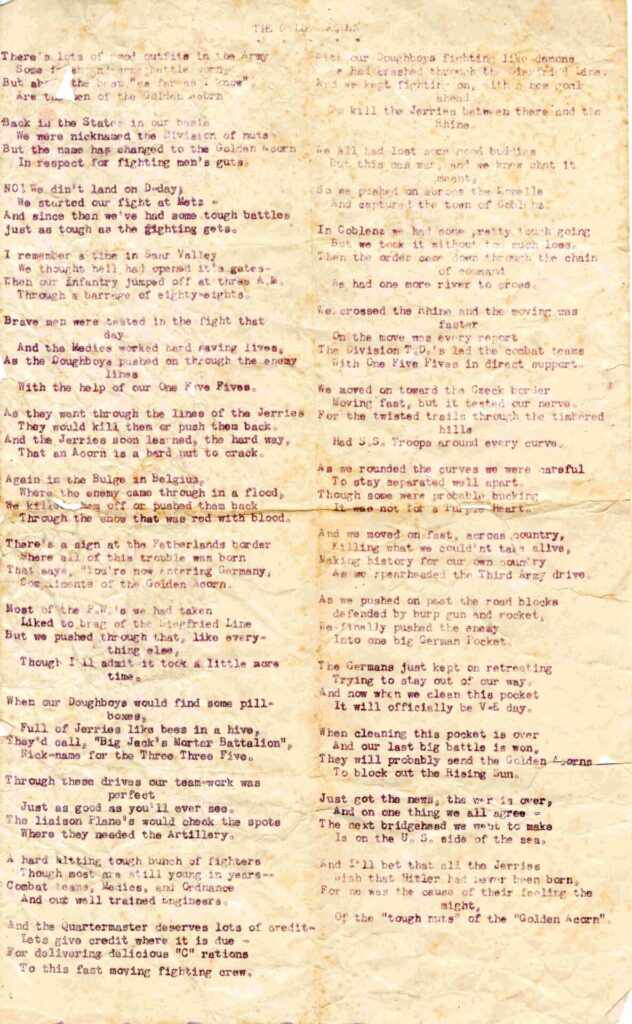

Ration Cards
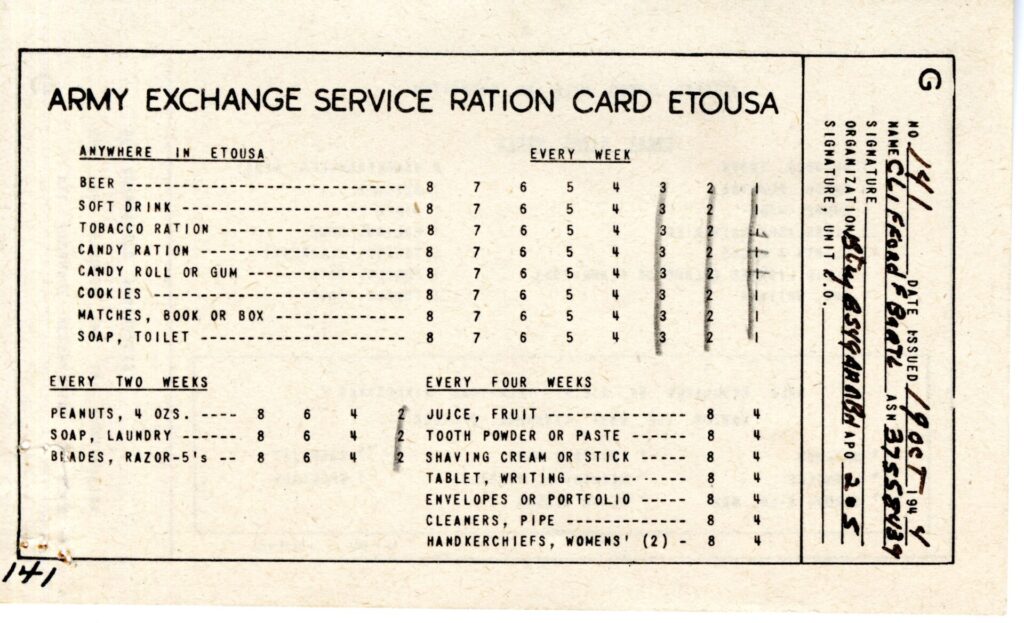
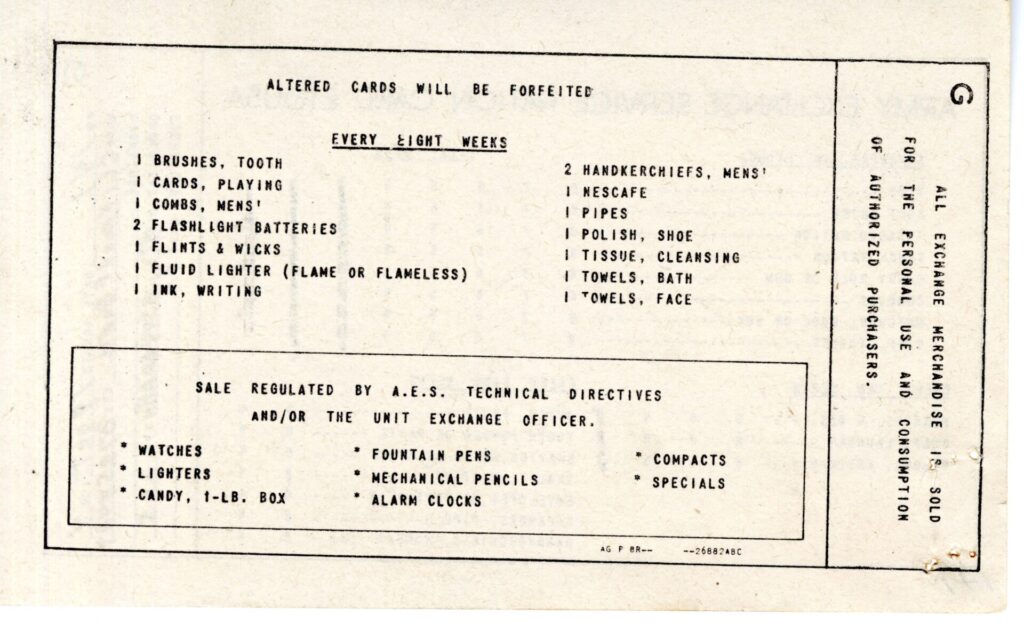
During World War II, the European Theater of Operations United States Army (ETOUSA) utilized ration cards for soldiers. These ration cards were used to ensure that soldiers had access to essential supplies to help them cope with the daily stress of warfare, such as cigarettes, beer, and candy, as well as items for personal hygiene, such as toothbrushes, combs, razor blades, and soap.
Soldiers were typically issued ration cards based on their rank and the type of unit they were assigned to. For example, a soldier serving in a combat unit would likely receive a higher allocation of rations than a soldier serving in a support unit.
The distribution of ration cards to soldiers was typically handled by the Quartermaster Corps, which was responsible for supplying the army with essential goods and equipment. The Quartermaster Corps worked closely with the ETOUSA to ensure that soldiers had the supplies they needed to successfully carry out their missions.
The following are the soldiers whose names are on the ration cards that Vernon Goetz saved along with his diary.
- Sergeant Adolph J Shylanski
- Private First Class Anthony J Russo
- Private First Class Beauford Dosley
- Corporal Carl W Sagert
- Sergeant Clarence R Elrod
- Private First Class Clifford F Bartz
- Private First Class Donald C Kroner
- Sergeant Elbert E Smith
- Technician Fourth Grade Everett F Finlay
- Technician Fourth Grade Francis M Banks
- Staff Sergeant George Derby
- Private First Class Glennon J Phillips
- Staff Sergeant Harry J Reid
- Private First Class Henry J Block
- Private First Class John G Buchmann
- Technician Fourth Grade Joseph H Bridges
- Technician Fifth Grade Robert W Schneider
- Sergeant Samuel M Houck
- Private Stanley K Bobola
- Corporal Uris T Hawkins
- Staff Sergeant Verle E Claussen
- Technician Fifth Division Virgil E Keys
